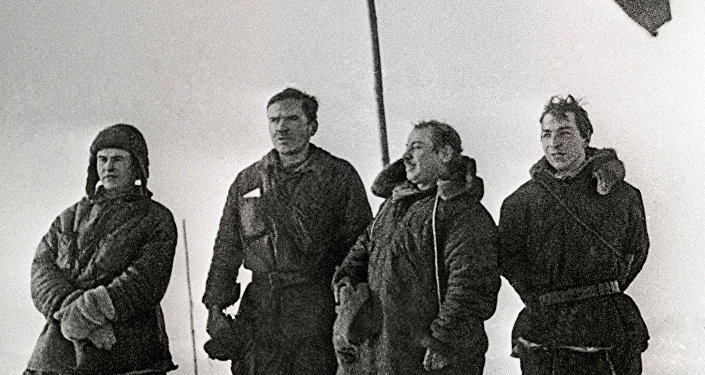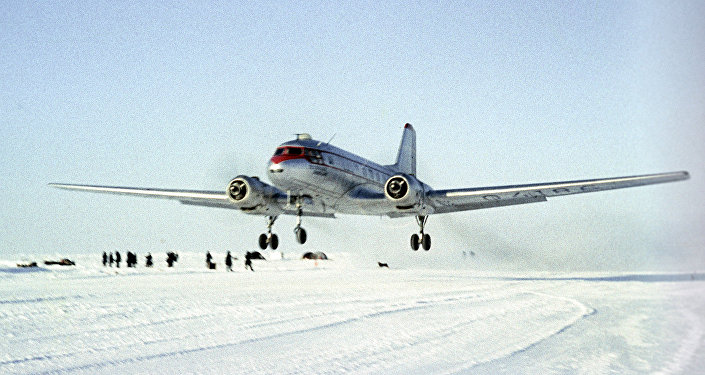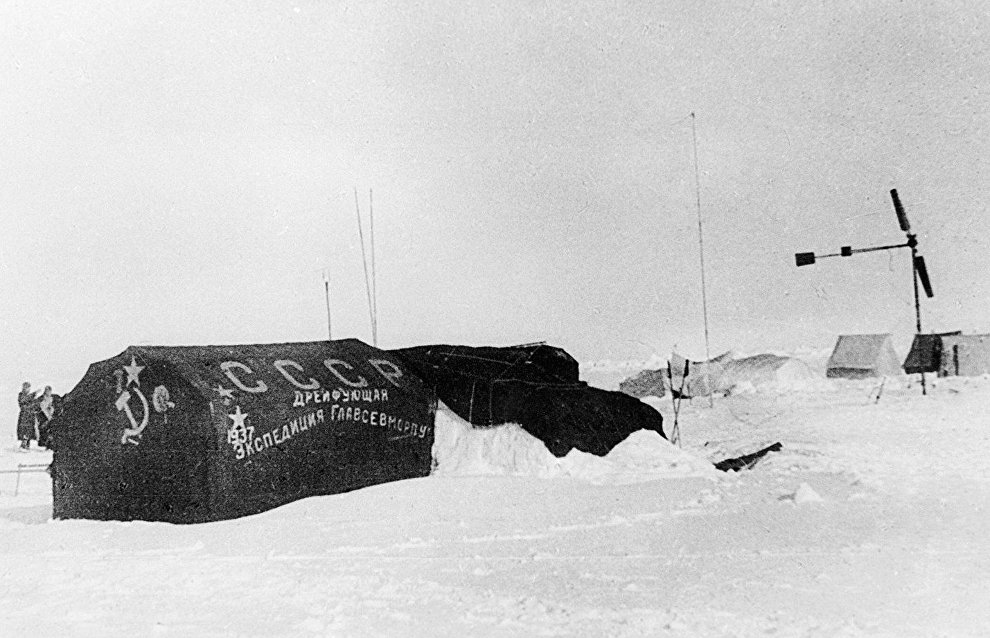New Year’s celebrations on drifting ice
Even polar explorers celebrate New Year's Eve. It's possible that Ivan Papanin, Yevgeny Fyodorov, Ernst Krenkel and Pyotr Shirshov and the crew of the Soviet Union's North Pole 1 drifting research station, the first such station in history, were also at a loss as to how to throw a party on ice December 31, 1937. But the hostile Arctic environment did not prevent these brave men from celebrating the beginning of the year in 1938. Of course, they celebrated in an ascetic setting, without delicacies or champagne, but they ate to their heart's content.
Here is what radio operator Ernst Krenkel wrote in his book "The Four Comrades" about the North Pole 1 station. "A strong southerly wind blew steadily on New Year's Eve, and a snowstorm also set in. As usual, I transmitted a weather forecast to Rudolf Island at 12:15 am and exchanged New Year's greetings with them. After that, the four of us sat around a milk-can serving as an improvised table. Our meal included familiar soda-baked flat-cakes, heavy as lead. We ate them with pressed caviar. This meal was mildly edible. After that, we treated ourselves to some mashed potatoes with hotdogs and washed down the remaining cake with coffee."

© RIA Novosti. Victor Temin. New Year’s celebrations on drifting ice
Other North Pole station crews celebrated New Year's Eve in a more familiar traditional setting. On December 30, 1954, a plane delivered a Christmas tree and New Year's gifts to the North Pole 3 station. "We had lots of fun celebrating New Year's Eve. The weather was relatively calm, with air temperatures hovering below minus 40 degrees Celsius, and a snowstorm blew steadily. A Christmas tree decorated with multi-color lights stood in the middle of the cozy mess-room," oceanologist, geographer and head of the North Pole 3 expedition Alexei Tryoshnikov wrote in his diary.
Expedition members also received a piano by plane from a polar station on Cape Chelyuskin and played it in an igloo.
Planes regularly delivered letters from polar explorers' families in the USSR. People working for months on end far from their homes found this to be one of the best gifts. Polar station crews looked forward to reading letters from their families on New Year's Eve, with pilots trying hard to deliver them on time, no matter what. In 1960, famous Soviet pilot Ilya Mazuruk delivered mail and New Year's gifts to the North Pole 8 station, braving thick fog and deteriorating weather conditions.
"We had already traveled almost halfway and had to decide whether to turn back or not. But what if the fog is not too dense and we can still land? The plane's captain, Ilya Mazuruk, would do whatever he could to deliver the New Year's gifts to the station's crew," oceanologist Nikolai Blinov, chief of the North Pole 8 station (April 3, 1960-April 15, 1961), wrote.
The station's crew didn't just sit around waiting for the plane. Besides the lights lining the airfield, they lit bonfires that could be seen more clearly in the fog. Buckets, metal food containers, and fuel-soaked rags were all used as beacons for the incoming plane.
"Six people disappeared into the polar night and fog, wading through snowdrifts and turning their faces away from the biting wind. They carried buckets, dragged cans on a buck-rake, with a radio station tucked in a backpack. They had to move 1,500 meters from the edge of the airfield as fast as possible and light bonfires in the process. It's hard enough to travel this distance on smooth ice in freezing weather, but we had to move between tussocks, hummocks and deep snowdrifts in total darkness. When one bonfire started vanishing in the fog as we walked away, we lit another one and moved on. A bonfire was built every 300-400 paces. The bonfires formed a straight line to guide the plane to the airfield," Blinov recalled.

© RIA Novosti. S.Preobrazhenski. New Year’s celebrations on drifting ice
The plane circled the airfield twice and landed on the third approach using the bonfire beacons. The polar station crew was delighted to receive letters from home. Apart from their families and friends, polar explorers received letters from many strangers who were interested in their heroic profession at that time. "We receive many letters, hundreds and hundreds of them. Our familiar and unfamiliar friends are writing to us from across the nation. Of course, young people with a passion for new, unusual and romantic quests sent the most touching letters. Many envelopes had unfamiliar stamps and addresses in foreign languages, as well as greetings from nice ordinary people. We have always been cared for and supported by our many friends, and this was the best boost for our morale during our 12-month struggle against the polar elements," wrote oceanologist Vladimir Shamontyev, chief of the North Pole 9 station (1960-1961).
However, polar station crews never forgot about their work, not even on holidays because there is no place for complacency in the Arctic. Someone always kept an eye on the situation, while the others had a good time. His comrades were always ready to come to the rescue and grapple with the ice-floes, ocean waters and blizzards. They resumed their work after a short break because it was necessary to constantly monitor the environment.
